Russian Way of Deterrence: Strategic Culture, Coercion, and War
Dmitry (Dima) Adamsky
Visit to download the full and correct content document: https://ebookmass.com/product/the-russian-way-of-deterrence-strategic-culture-coerci on-and-war-dmitry-dima-adamsky/
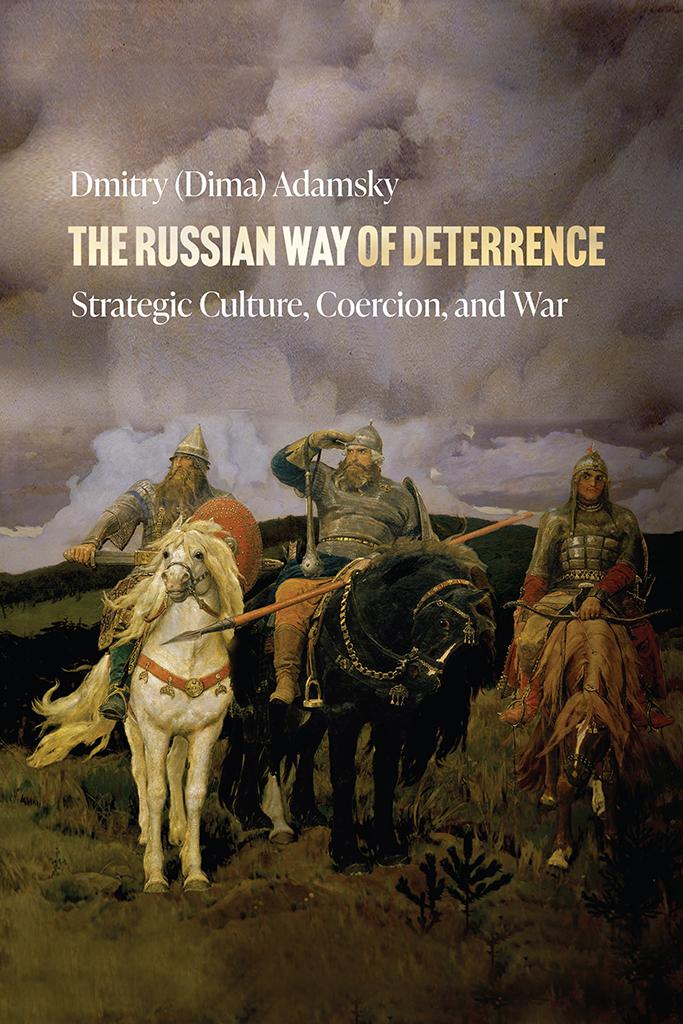
More products digital (pdf, epub, mobi) instant download maybe you interests ...
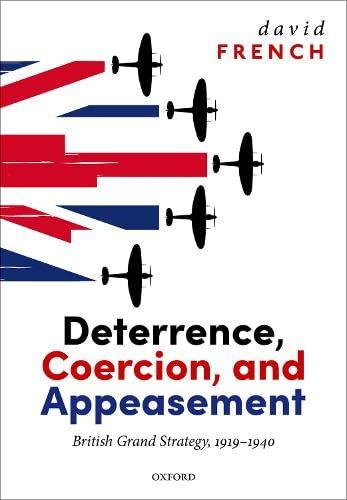
Deterrence, Coercion, and Appeasement: British Grand Strategy, 1919-1940 1st. Edition David French
https://ebookmass.com/product/deterrence-coercion-andappeasement-british-grand-strategy-1919-1940-1st-edition-davidfrench/

The False Promise of Superiority: The United States and Nuclear Deterrence after the Cold War James H. Lebovic
https://ebookmass.com/product/the-false-promise-of-superioritythe-united-states-and-nuclear-deterrence-after-the-cold-warjames-h-lebovic/
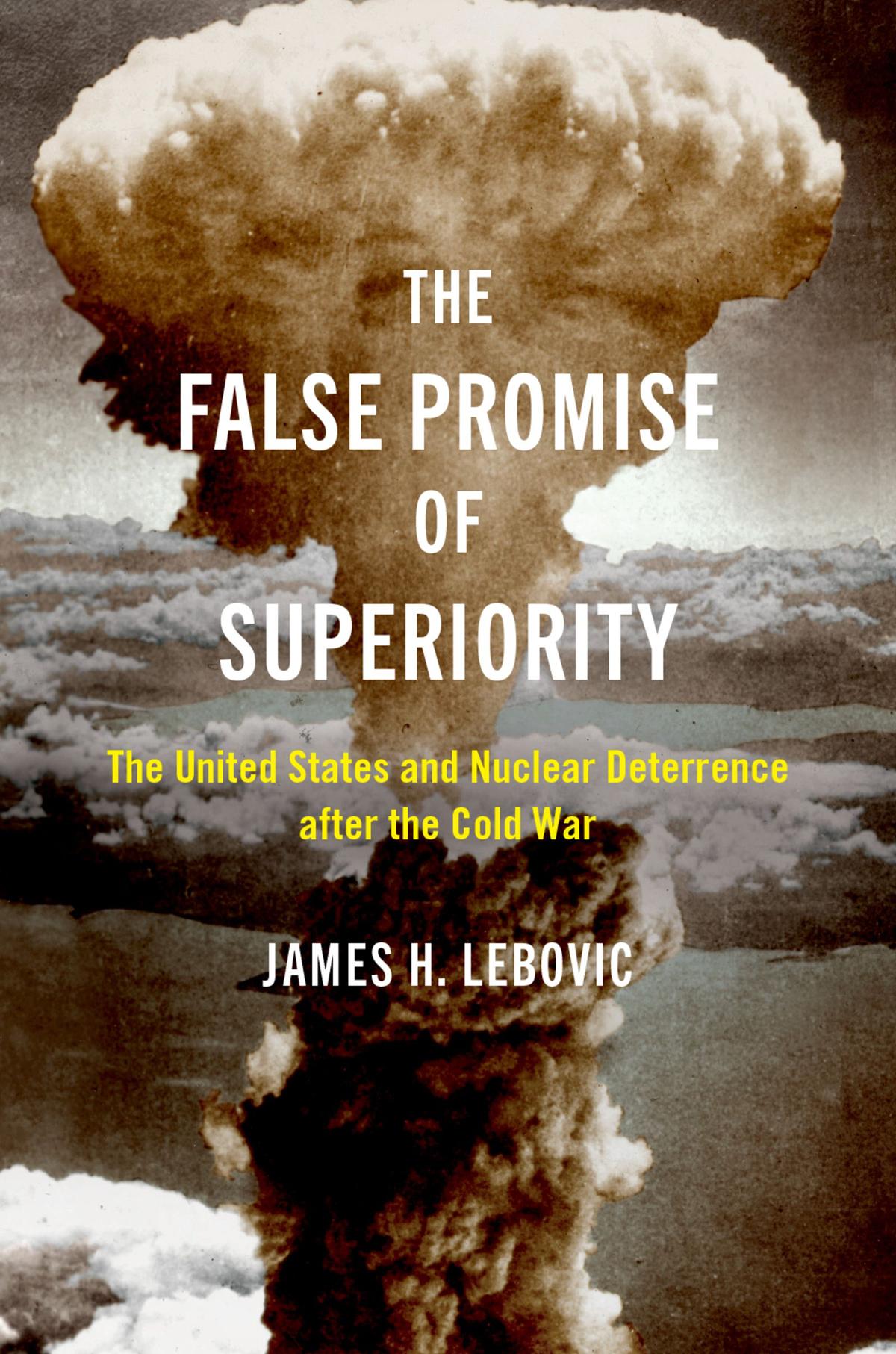
The False Promise of Superiority: The United States and Nuclear Deterrence after the Cold War James H. Lebovic
https://ebookmass.com/product/the-false-promise-of-superioritythe-united-states-and-nuclear-deterrence-after-the-cold-warjames-h-lebovic-3/
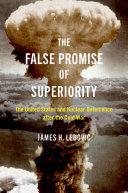
The False Promise of Superiority: The United States and Nuclear Deterrence after the Cold War James H. Lebovic
https://ebookmass.com/product/the-false-promise-of-superioritythe-united-states-and-nuclear-deterrence-after-the-cold-warjames-h-lebovic-2/

Our Enemies Will Vanish: The Russian Invasion and Ukraine's War of Independence Yaroslav Trofimov
https://ebookmass.com/product/our-enemies-will-vanish-therussian-invasion-and-ukraines-war-of-independence-yaroslavtrofimov/
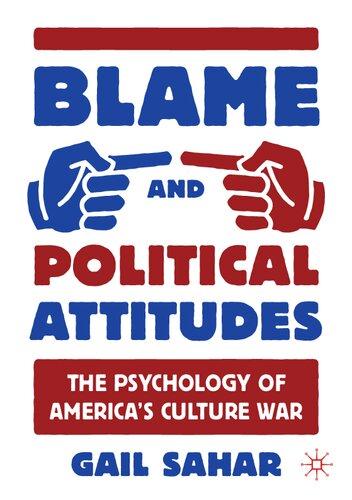
Blame and Political Attitudes: The Psychology of America's Culture War Gail Sahar
https://ebookmass.com/product/blame-and-political-attitudes-thepsychology-of-americas-culture-war-gail-sahar/

The French Revolutionary Tradition in Russian and Soviet Politics, Political Thought, and Culture Jay Bergman
https://ebookmass.com/product/the-french-revolutionary-traditionin-russian-and-soviet-politics-political-thought-and-culture-jaybergman/
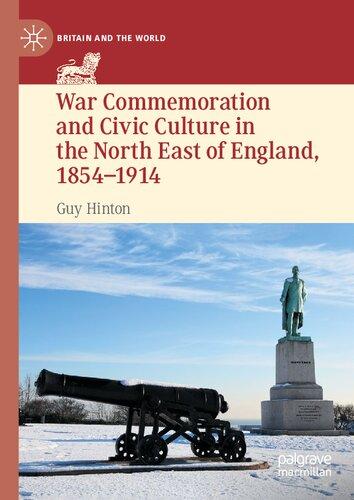
War Commemoration and Civic Culture in the North East of England, 1854–1914 1st Edition Hinton
https://ebookmass.com/product/war-commemoration-and-civicculture-in-the-north-east-of-england-1854-1914-1st-editionhinton/

Trapped: Brides of the Kindred Book 29 Faith Anderson
https://ebookmass.com/product/trapped-brides-of-the-kindredbook-29-faith-anderson/


DMITRY (DIMA) ADAMSKY
THE RUSSIAN WAY OF DETERRENCE
Strategic Culture, Coercion, andWar
STANFORD UNIVERSITY PRESS
STANFORD CALIFORNIA
Stanford University Press Stanford, California
© 2024 by Dmitry (Dima) Adamsky. All rights reserved.
No part of this book may be reproduced or transmitted in any form or by any means, electronic or mechanical, including photocopying and recording, or in any information storage or retrieval system, without the prior written permission of Stanford University Press.
Printed in the United States of America on acid-free, archival-quality paper
Library of Congress Cataloging-in-Publication Data
Names: Adamsky, Dima, author.
Title: The Russian way of deterrence : strategic culture, coercion, and war / Dmitry (Dima) Adamsky.
Description: Stanford, California : Stanford University Press, [2024] | Includes bibliographical references and index.
Identifiers: LCCN 2023017225 (print) | LCCN 2023017226 (ebook) | ISBN 9781503630871 (cloth) | ISBN 9781503637825 (paperback) | ISBN 9781503637832 (epub)
Subjects: LCSH: Deterrence (Strategy) | Strategic culture Russia (Federation) | Russia (Federation) Military policy.
Classification: LCC UA770 .a33 2024 (print) | LCC UA770 (ebook) | DDC 355/.033547 dc23/eng/20230629
LC record available at https://lccn.loc.gov/2023017225
LC ebook record available at https://lccn.loc.gov/2023017226
Cover design: George Kirkpatrick
Art: Victor Vasnetsov, Heroes(Bogatyri), 1898, oil on canvas, 116.2 in x 14.6 ft, Tretyakov Gallery, Moscow, Russia, with additional photoshop by George Kirkpatrick
Typeset by Newgen in 10.75/15 Adobe Caslon
To BDA
ACKNOWLEDGMENTS
This work would not have been possible without the generous assistance of several people. I would like to briefly express my debt of gratitude to them.
The initial idea for the book evolved from my conversations about the nexus of strategic culture and art of deterrence with Jacqueline (Jackie) Deal, Andrew (Andy) Marshall, Andrew May, and Stephen Peter Rosen. I owe my gratitude to them for introducing me to the basic research question, for stimulating me to do cross-cultural comparative work on it, and for encouraging me to look deeper into variation of deterrence across strategic communities on both sides of the Atlantic, in Asia, and in the Middle East. Unparalleled opportunities to conduct, present, discuss, and polish my research in summer studies, seminars, and workshops as well as their questions, remarks, and suggestions during the last decade have been indispensable.
I would like to thank the Russia Strategic Initiative (RSI) at U.S. European Command, RSI director Ken Stolworthy, and Senior Strategic Advisor Michael Rouland for supporting an in-depth research endeavor on the Russian way of deterrence. The RSI Project Connect seminars offered the most valuable feedback to this end. I have benefited enormously from the observations, comments, and opportunity to develop knowledge together with Kristin Ven Bruusgaard, Samuel (Sam) Charap, Anya Fink, Michael Kofman, Roger N. McDermott, Andrew Monaghan, Olga (Olya) Oliker, Joe Cheravitch, and Katarzyna Zysk.
Michael Kofman and Andrew Monaghan dedicated to this work more attention that anyone else. Both have been generous with their time and wisdom—Michael Kofman on practical aspects of deterrence in the Russian context, and Andrew Monaghan on the peculiarities of Russian strategic culture. For several years, both skillfully combined collegial encouragement, sharp critique,
constructive challenge, and useful advice. I benefited much from these two intellectual-social comrades in arms and would like to thank them.
I would like to thank Uri Bar-Joseph, whose work has informed my thinking on deterrence theory in the nonnuclear realm and assisted to better polish the notion of the culmination point of coercion. I would like to thank Yossi Baidatz, Nehemia Burgin, Keir Giles, Daniel Rakov, Yaacov (Kobi) Falkov, Lukas Milevski, Amr Yussuf, Keir Lieber, Daryl Press, Ariel (Eli) Levite, and Gideon Frank for the insights that highlighted the uniqueness of the Russian case within the broader comparative context.
Over the years I presented my work in several academic and nonacademic conferences, workshops, and seminars in the U.S., Europe, and Asia. I would like to thank Corentin Brustlein, Eliot Cohen, Eric Edelman, Janice Gross Stein, Ahmed Hashim, Beatrice Heuser, Robert (Rob) Johnson, David (Dave) Johnson, Sarunas Liekis, Thomas Mahnken, Kimberley Marten, Lawrence Rubin, Frans Osinga, Jeronim Perovic, Michael Raska, Michael Reynolds, Nicholas Roche, Adam N. Stulberg, Stephan De Spiegeleire, Tim Sweijs; Nicholas (Nik) Taylor and Alex S. Wilner, who invited me to present at these venues, to receive feedback, and to develop my ideas further.
I am indebted to Assaf Moghadam, Eithan Shamir, and James Wirtz for advice on theory and methodology, which they provided to me when I was preparing the book for publication. Two anonymous reviewers reread several versions of the manuscript meticulously and offered constructive and original suggestions, which I much appreciate and which approved the quality of the final product.
Special words of thanks are due to Ruvik Danieli for the superb editorial work and for always being there for me. I wish to acknowledge the professionalism of Alan Harvey and Daniel LoPreto of Stanford University Press, and thank them for their support, patience, and advice along the way.
I dedicate this book to BDA, who taught me about the limits of coercion, about the importance of reassurance, and about the
greater significance of other aspects of life.
INTRODUCTION
THIS BOOK IS ABOUT the Russian approach to coercion and the cultural factors that account for its unique features. Coercion is a form of geopolitical influence. Its aim is to prevent an opponent from engaging in unwanted behavior by threatening to use force, or by its limited employment. Coercion targets the adversarial strategic calculus. By communicating that the costs of a prospective action outweigh the expected benefits, it seeks to convince the adversary to do something against its will. This strategy has two subcategories. Coercing an actor from doing something is called deterrence. Coercing an actor to do or stop doing something is called compellence.
In each form of influence the mechanism is identical—imposing one’s strategic will on the adversary by the use of threat without resolving to massive use of force. Coercion rests on negative incentives, but it is a strategy of psychological influence, not physical domination. In international politics coercion is one of the main tools of statecraft, along with diplomacy and war. It is also a prominent scholarly concept in the academic world, where it features under the rubric of “deterrence theory.”
Deterrence theory was incepted during the first decade of the nuclear era. Since then it has turned into one of the key constructs of international security studies. Until recently, the scholarship implied that the principles of deterrence theory and policy are somewhat generic and universal. However, the more scholars have explored how different actors practice this strategy worldwide, the more they have come to realize that the concept of coercion (both deterrence and compellence) varies across strategic communities. Various international actors conceptualize and practice this strategy
differently. The Russian case offers an excellent illustration of a unique approach to deterrence by a non-Western strategic community.
This book dubs the Russian theory and practice of coercion (both deterrence and compellence) as deterrence à la Russe. This choice of wording reflects the Russian tendency, evident until recently, to use the term deterrence as an umbrella reference to all forms of coercive influence. The book explores the evolution of deterrence à la Russe and its intellectual sources, novelties, strengths, weaknesses, and prospective avenues of development. It investigates how and why this concept differs from the Western practice of this strategy and outlines the implications of this singularity for the policy and theory of international security.
The intellectual histories of the Russian and Western approaches to deterrence differ. For various reasons, which this book discusses, Russian deterrence theory is almost five decades younger than its Western equivalent. However, since the Soviet collapse, Russian defense intellectuals and practitioners have not only bridged the knowledge gap with the Western scholarship on this subject, but have also developed a unique and innovative theory of coercion. The Russian conceptualizations seem to be at least as sophisticated as the Western community’s take on this matter. Russia is in good shape to deal with the psychological-cognitive dimensions of deterrence; it has demonstrated flexibility in merging different domains, and sophistication in its search for effective calibration of damage and in its effort to tailor its approach to the adversarial strategic culture.
Until the recent splash of interest, for most of the 2000s, Russian scholarship of deterrence left Western theoreticians and practitioners of this strategy somewhat behind. In the West, especially in the U.S., international security studies during the 1990s took what some call a vacation from military thought and strategy. As a result, up to the first decade of the twenty-first century, deterrence largely fell into disfavor in Western academic and defense circles. In the meantime, in Russia, deterrence theory was in full blossom. The new Russian
“deterrence” converts have been storming the ivory tower of Western Cold War strategic theory and exploiting the Western intellectual hiatus to catch up. While Western deterrence theory has been in relative stagnation, and its practice has atrophied, the Russian experts have explored, internalized, critically emulated, and adopted certain constructs. Like the mythical Holy Grail, canonized deterrence theory has provided Russian experts with insights as regards two goals: to make better sense of adversarial strategic behavior, and to organize their own strategic behavior in the protracted political-military competition with the West.
MAIN ARGUMENT
This book compares and contrasts the Russian approach to deterrence with the Western conceptualization of this strategy. It argues that deterrence àlaRussehas a much broader meaning than what Western experts have in mind when they use this term. In Russian parlance, it stands for employing threats, sometimes accompanied by limited use of force, to maintain the status quo, change it, shape the strategic environment within which the interaction occurs, prevent escalation, or de-escalate. Russian discourse uses the term to describe activities toward and during military conflict, and the usage of the term spans all phases of war. Also, deterrence àla Russe is not so much about rhetorical threats as it is about an action itself, concrete engagement of the competitor, which Russian experts see as a necessary condition for shaping a situation of coercion.
The official Russian term for the host of coercion activities in various operational domains is “strategic deterrence.” At least until recently, Russian strategic thought tended not to differentiate, as is customary in the West, between coercion, deterrence, and compellence. This is one of the book’s leitmotifs, and it matters in understanding Russian strategic behavior. The analysis in this book is guided by the argument regarding the peculiar Russian way of conceptualizing the relationship between deterrence, coercion, and
compellence. The individual chapters integrate all three concepts rather than treat them separately.
What accounts for the difference between the Russian conceptualizations and the Western version of this strategy? Where does the sophistication of the Russian approach come from, especially considering that their research and development of this concept has been shorter than in the West? The main argument of this book is that cultural and ideational factors account for the peculiarities of the Russian approach. The singularities of deterrence à la Russe emanate from Russian strategic culture, national mentality, military customs, and intelligence traditions. The book demonstrates how the latter have been conditioning the former.
The book integrates the concept of coercion with the strategic culture framing, as the main lens to explain it. This nexus is the book’s main novelty. To explore the impact of cultural factors on the Russian approach to deterrence, this work leans on several bodies of literature and builds on the author’s previous efforts.1 It offers delta as compared to the author’s work and the state of the field. The basic facts about Russian strategic culture and military modernizations, the meta-themes of this book, which the author has been exploring elsewhere, have not changed. They therefore demand revisiting to promote the main argument.
The book itself, however, is a fresh analytical product. The author’s previous endeavors were mainly micro-oriented. They are the point of departure for the novel claims and the framing of the macro picture. The book adjusts, expands on, and widens the author’s earlier findings and supplements them with new empirical evidence, new linkages and contexts, and innovative theoretical explanations. The comprehensive analysis that the book offers has a synergetic effect—the new framework (i.e., cultural exploration of the Russian approach to coercion) is larger than the sum of its elements (i.e., an expanded earlier work with added, entirely new components).
CONTRIBUTIONS
Why does the Russian approach to deterrence matter for international security theory and policy? Strategic deterrence, or what this book calls deterrence à la Russe, lies at the heart of the current Russian art of strategy and is one of the main tools of statecraft in the Kremlin’s arsenal. Figuratively speaking, it occupies an intermediate position between classical war (i.e., use of massive brute force) and traditional diplomacy. Exploring the intellectual history of this concept and contrasting it with the equivalent tool in the West is not an arcane exercise, but a necessary condition for understanding the deep mechanics of this Russian stratagem.
Scholars and practitioners on both sides of the Atlantic have been laggard in tracing the evolution of the Russian theory of deterrence, its conceptual apparatus and terminology. With few exceptions, Western observers often lack a suitable framework of analysis to grasp Russian strategic theory and its operational applications. If left unaddressed, this shortcoming may downgrade Western performance in the national security realm. Examining Russian conduct through what some Western experts see as the “universal logic of deterrence” and analyzing it using the terminological apparatus of Western strategic studies is at best unhelpful. At worst, it could result in mirror imaging, intelligence misdiagnosis, and misperceptions, leading to security dilemmas and inadvertent escalations. If investigated properly, however, it can enrich Western strategic thought and improve crisis behavior and military performance.
Theoretically, the book breaks new ground in three subdisciplines of international security studies. First, it contributes to the field of Russian area studies. The book is the first comprehensive intellectual history of the Russian approach to deterrence. It arranges the existing knowledge on the subject, offers novel findings pertaining to the unique mechanism of deterrence à la Russe, and makes it accessible to broad audiences. It merges state-of-the-art scholarship on various aspects of the Russian theory and practice of deterrence with Russian strategic culture literature to offer the first-ever discussion of the cultural sources of deterrence àlaRusse. Scholars
can apply this pioneering method to explore other fields of Russian strategic behavior.
Second, the book contributes to the field of international security studies. This is the first systematic effort to merge the literature on deterrence with works on strategic culture, and to utilize the latter to explain the former. As a rule, these two corpora of research have been kept apart in the security studies literature. The literature has employed strategic culture theory to better tailor deterrence programs to the object of influence. This book is among the first comprehensive efforts to do things the other way around—to employ a cultural lens to explain an actor’s proclivities when initiating a strategy of coercion. This novelty has potentially broad theoretical implications. The analytical framework that the book introduces aims to open a new avenue of research. Scholars of international security studies can replicate and apply the propositions, research design, and method that this book offers to other empirical cases of coercion.
Finally, this is a trailblazing effort in all three subdisciplines of international security studies (i.e., deterrence, strategic culture, and area studies) to compare and contrast, through a cultural lens, the Russian approach to deterrence to Western strategic theory.
STRUCTURE
The main argument about the nexus between strategic culture and the Russian approach to coercion in the nuclear, conventional, and informational realms knits together the individual chapters. The book sets out to outline the intellectual history of deterrence à la Russe and then offer cultural explanations for its traits.
Following this Introduction, the book proceeds as follows: Chapter One introduces the reader to the strategic culture scholarship and deterrence terminology—two key theoretical concepts that frame the book’s analysis.
Chapter Two presents the genealogy of deterrence à la Russe from Soviet times to the present. It analyzes the various realms of deterrence as well as their cross-domain integration, highlighting the unique characteristics that distinguish deterrence à la Russe from the non-Russian, mainly Western approach to this strategy.
Chapter Three explores Russian strategic culture. It traces the peculiarities of deterrence à la Russe to unique cultural, ideational, and historical factors pertaining to the Russian style of strategy and military tradition.
Chapter Four critically discusses deterrence à la Russe and hypothesizes about the main challenges, which Russian practitioners of this strategy have been facing.
Chapter Five identifies the unknowns pertaining to deterrence àla Russe, merges them with the preliminary evidence from the war in Ukraine, and outlines the avenues of future research. The Conclusion summarizes the findings.
A note on terminology is due. Terminological discipline is necessary to study any foreign sphere of strategic activity where the object of analysis, in this case Russia, possesses its own professional vocabulary. This is not a casuistic, but a way to understand the otherness of a strategic other and avoid mirror imaging. Russian and Western experts often mean different things when using the same terms and use different terms to refer to the same things when discussing deterrence. Moreover, even Russian sources differ among themselves. This book sticks to Russian jargon as much as possible. It explicitly mentions when it uses the English terminology and when it introduces its own terms in order to better grasp the Russian concepts. In keeping with this approach, the book uses the nonRussian term “cross-domain coercion” in order to explain and discuss the Russian term “strategic deterrence” and make it accessible to non-Russian audiences.
A note on the sources is also due. The book explores the genealogy of Russian strategic thought and the intellectual climate within which it evolved. The analysis draws on a wide range of primary and secondary sources. Russian authors are affiliated with
the establishment to varying degrees and come from different, often competing organizations within and beyond the Russian strategic community. The book seeks to represent this intellectual edifice in its entirety. It covers doctrinal and theoretical debates and competing schools of thought, comprised of active-duty or retired officers and officials, defense intellectuals, and experts from Russian academia and the think-tank industry. The book specifies who is writing what, and the extent to which the writings reflect formal doctrine, policy plans, and strategy.
A note on the analytical approach: the book also pays attention to disconnects between theory and practice—a recurring trait in Russian strategic tradition. Russian holistic theories, as the book demonstrates, do not always cover everything adequately, and often mix descriptive and aspirational arguments. The book seeks to represent the Russian discourse as a coherent whole, but also highlights its internal incoherence.
Deterrence àlaRusse, like any other strategic theory, is constantly evolving. Deterrence as a subject of study is not a passing fashion but one of the main themes in the Russian international security discipline. In this regard, the Russian expert community is far-flung and vibrant. In the foreseeable future, this milieu is more likely than not to double down on its efforts to refine this tool of strategy and open new avenues of exploration. For Russia watchers in the West, then, it is essential to systematize knowledge about deterrence àla Russe and closely follow its evolution. This book does exactly that, but it certainly is not the conclusive statement on the matter. Rather, it delves into the intellectual history of the concept and outlines a prospective research program.
The book was completed and went into production several months prior to the Russian invasion of Ukraine. As of this writing, the war continues to unfold and the big picture is still emerging. Until the initial fog of war fades away, probably after the first cessation of massive fighting, any conclusions are premature. The chapter outlining the known unknowns and the future avenues of research offers some preliminary insights pertaining to Russian coercion prior
to and during the war. However, the book’s main contribution lies in providing the framework for a systemic examination of the Russian approach, once sufficient data has been accumulated from the battlefields of Ukraine. The book describes the genealogy of the Russian approach to coercion and highlights the cultural, ideational, and historical factors that have shaped it. This intellectual history makes it possible to understand the sources and style of the Kremlin’s prewar and intrawar coercive conduct in Ukraine and to examine the prospective evolution of theory and practice of deterrence àlaRusse.
CHAPTER 1
STRATEGIC CULTURE AND DETERRENCE SCHOLARSHIP
THIS CHAPTER OFFERS a brief overview of strategic culture scholarship and a concise outline of the current state of deterrence theory.1 Both are the main analytical lenses of this book. The subsequent chapters use the terminology associated with both concepts. The conceptual orientation that this chapter offers aims to make the book’s main arguments immediately accessible to the reader.
The chapter consists of five sections. The first section defines the strategic culture paradigm and outlines its contributions to the communities of theory and policy. The second section discusses its lexicon. The third section describes the genealogy of the strategic culture concept. The fourth section highlights the current generation of scholarship. The concluding section discusses the current state of the deterrence literature and situates this book within this body of work. In sum, the chapter highlights the book’s contribution to both research programs—deterrence and strategic culture.
STRATEGIC CULTURE: DEFINITIONS AND APPLICATIONS
Scholars agree that culture matters in strategy. Some argue that it is among the most important factors shaping national security concepts, military doctrines and organizational structures, weapon
systems, styles of war, and almost every other aspect of a state’s strategic behavior. There is also a consensus that culture is one of the most challenging factors as regards detecting, describing, and operationalizing it in a scientific way. To that end, the concept of strategic culture is used. It is a framework of analysis that utilizes cultural lenses to explain the strategic behavior of states in the international arena.
There is no single scholarly definition of strategic culture. As often happens in the social sciences, competing schools of thought coexist. This book defines strategiccultureas a set of shared values, norms, beliefs, assumptions, and narratives (written, oral, formal, and informal), which shape and sometimes determine the collective identity, instincts, and modus operandi of a given strategic community in its approach to questions of peace and war (i.e., the appropriate ends, means, and ways of achieving national security objectives).
The style of warfare and tradition of war are central to any strategic culture. One can further unpack it into the organizational cultures of specific institutions comprising a given strategic community. The analysis could go even further to trace the subcultures of the military services, as well as those of the intelligence community, national security organs, and defense industry, especially since their impact on strategicculturevaries from one actor to another.
This book utilizes the expression strategic community as an umbrella term for the entirety of institutions that officially and unofficially shape and determine various aspects of national security policy in a given state. Usually the military, intelligence apparatus, organs of executive and legislative power, defense-industrial complex, and think-tank industry are central to strategic communities. The significance of a given organ within the strategic community varies from one state to another. In the course of time, it can also shift in terms of bureaucratic weight and the scale of influence. A strategic community, despite the unique subcultures of
the organs comprising it, shares general traits of the strategic culture of a given state.
Strategic culture scholars would argue that the ideational explanations they offer are a useful addition to neorealist rationalizations. The latter see strategic behavior as shaped by material and structural factors. The majority of the scholarship utilizes the strategic culture paradigm to supplement, rather than as a substitute for, the neorealist approach. However, in certain cases strategic culture may offer advantages over the non-ideational approach. Theoreticians and practitioners of international security find the paradigm useful in particular when explaining counterintuitive and puzzling strategic behavior, which appears dysfunctional, ineffective, and self-defeating if judged by universal realist standards.
Foreign cultures may differ fundamentally from one’s own in terms of thinking and actual policy in the national security realm. The strategic culture framework makes it possible to step outside one’s ideational milieu, and at times ethnocentric worldview, and grasp the “otherness of the strategic other.” Employing this analytical framework can potentially reduce the risk of mirror imaging, misdiagnosis, false assumptions, miscommunication, and inadvertent escalation. Practitioners value the analytical predisposition offered by this paradigm, especially in the realm of coercion. Even if they don’t call it by its scholarly name, they employ it when dealing with coercive signaling, be it when trying to shape adversarial strategic behavior or to decipher strategic communications received from a competitor.
Originally the strategic culture paradigm was incepted within the narrow, nuclear context of the Cold War. Incrementally, it has turned into one of the main subdisciplines of international security studies and expanded its scope to a wide range of empirical applications. Scholars and practitioners employ the lenses of strategic culture to explain the ends, means, and ways of the security policy of state, non-state, and multi-state actors, in the conventional,
subconventional, and nonconventional realms and at all levels of activity, from strategy to tactics.
CONCEPTUAL PREDISPOSITIONS
Scholars of the field have developed a terminology and concepts, on which they do not necessarily agree but which they widely utilize. Any analyst employing the strategic culture framework, explicitly or implicitly, takes a position on the following three theoreticalmethodological questions. First, in the relationship between culture and strategic behavior, is the former a cause or a context of the latter? Is culture an independent variable that explains variations in strategy, or is it a context that somewhat conditions strategic thinking and action? As of this writing, the general tendency within the field has been to move away from bold statements about culture as the sole cause of behavior. The majority of scholars see it as a context, or as an intervening factor, or as one among several equally important independent variables, which in some cases offers better explanations of strategic behavior.2
Second, what are the sources of strategic culture? Culture, strategic culture specifically, emanates from the interplay of ideational and material factors. Scholars tend to offer a synthetic description of a cultural mosaic and trace recurring behavior to macro-environmental and nonmaterial sources.3 Shared national narratives (the elite’s and collective beliefs about oneself, others, and the environment) may account for a state’s approach to international security. To be considered part of national strategic culture, these mythologies must be common to organs of the strategic community. It does not matter whether or not these beliefs are grounded on facts. What matters is whether they are widely shared and inform an actor’s identity.4
Third, does strategic culture change over time? The consensus is that the culture of a given actor should manifest more continuity than change over time. The literature agrees that changes in
strategic culture are possible, albeit rare, and differentiates between three types. The first is a slow cultural transformation that spans a long period of time. Such a change is not brought about by deliberate effort, but through the accumulation of developments. These incrementally shape the norms and values of the given strategic community, forcing it to change. This change does not imply a total reinvention of the strategic culture, but rather the adaptation of earlier behavioral traits to the changing circumstances.5 The second type of transformation is an opposite process—a rapid and broad change occurring over a short period of time. It usually involves a deliberate decision to disconnect from the previous culture, reinvent itself, adopt a new set of values, and reform professional behavior. Usually, such a sweeping self-reform of a strategic community occurs in response to a fundamental geopolitical shift.6 In a third type of change, the overall culture stays intact but the strategic community adopts some new norms and practices. Such a change follows a major operational failure, when the traditional instincts cannot deliver. In such a situation, competing subcultures within the given strategic community emerge. They offer alternative philosophies, values, and modi operandi that eventually become the mainstream, thus changing certain aspects of strategic style. Such a shift is similar to the second ideal type in that it is rapid. It is similar to the first ideal type in that it has limited scope.7
GENEALOGY OF STRATEGIC CULTURE
Literature reviews systematize the strategic culture scholarship, breaking it down into four generations of research.8 The first generation emerged in the late 1970s, when Jack Snyder’s pathbreaking work coined the term. Snyder wrestled with the then mainstream “rational actor” model in IR theory, which largely ignored inter-state differences. He illustrated how these variations matter on the core issues of international security and might account for distinct modes of strategic behavior.9 Subsequent explorations of
the superpowers’ dynamic resulted in the claim that strategic culture is deeply rooted in a set of beliefs, in a nation’s formative experiences and political traditions, and creates a distinct mode of strategic thinking. The notion that different security communities might think in different ways about the same strategic matters began to gain acceptance. Empirically, the literature concentrated mostly on the nuclear strategies of the superpowers and their grandstrategy making.10
The second wave came in the 1990s. It sought a methodology to make the discipline less vague. This effort is closely associated with one of the key theoretical debates: whether strategic culture is an independent determinant of security policy, or constitutes a context, the intervening variable, the milieu within which strategy is shaped.11 The competing schools agreed that even if not ultimately driven by culture, national security policy has deep cultural underpinnings.12 The research program expanded. Several scholars concentrated on the interrelation between norms, culture, and strategic behavior on the national level;13 others focused on domestic texture to explain styles in generating military power,14 explored the role of bureaucratic cultures in military innovations and doctrines,15 and analyzed cultural isomorphism between militaries.16
The third generation picked up from the early 2000s. Methodologically, it took the same path. Empirically, the research program reflected the shifts in international security. Some focus went to the “rogue actors.” Academics applied the strategic culture framework to non-state actors, mainly jihadist,17 and explored various aspects of the Iranian18 Chinese,19 Russian,20 and North Korean21 strategic cultures. In parallel, works on “multi-actor” strategic cultures, European, Asian,22 and Nordic,23 flourished. Against the backdrop of major defense modernizations, studies explored how cultural factors condition the military innovations.24 The Second Nuclear Age stimulated the application of a cultural lens to the problems of proliferation.25
In parallel with the evolution of theory, scholars have been contesting its analytical value. Criticism has focused on insufficient operationalization, the nonfalsifiability of propositions, case selection bias (low-n research and low number of cross-cultural comparisons), and meager attention to the contest of different subcultures (i.e., treating the actor as a cultural monolith).26 The current, fourth generation of literature is seeking to refine the discipline in response. One line of endeavor implements a rigorous methodology that combines data and the social sciences.27 Another stream of work deals with the aggregation and disaggregation of strategic cultures. An extension of the earlier “multi-actor” works, it offers a more coherent picture of the macro-level, supranational, but still distinctive regional collective security identities, mainly in Europe and Asia.28 The flip side of this scholarship is a tendency to disaggregate monolithic strategic cultures. The culture of the strategic community is dissected into subcultures, which coexist and compete.29 Organizations whose cultures are best aligned with the dominant strategic culture seek to appropriate resources to their interests.30 Cultures of intelligence communities are another growing subfield.31
Finally, comparative cross-cultural analysis is gathering momentum. This method better highlights variation across the cases and better illustrates the idiosyncrasy of a given strategic actor. The literature compares and contrasts national styles in: insurgency and counterinsurgency,32 nuclear decision-making,33 deterrence,34 peacekeeping,35 and cyber affairs.36
DETERRENCE SCHOLARSHIP AND DISPOSITION OF THIS BOOK
This book lies at the intersection of two bodies of literature: theory of strategic culture and theory of deterrence. The latter explores the phenomenon of coercion in international politics. Coercion is a strategy of preventing unwanted behavior through influencing
adversarial cost-benefit considerations by threats. One of its forms is deterrence. It aims to preserve the status quo. The other form is compellence. It aims to change the status quo. The academic literature has explored the conditions, mechanics, and peculiarities of these interrelated forms of influence under the general rubric of “deterrence theory.”
The latter is one of the oldest and most thoroughly explored subdisciplines of international security studies. When the first wave of strategic culture scholarship arrived, the academic literature on deterrence was already about three decades old. Presumably, as of this writing, the intellectual energy invested in deterrence theory outweighs that invested in strategic culture exploration. This was obviously the case during the Cold War, both in Western academia and in the world of practice.
Following the Soviet collapse, the academic and policy worlds incrementally began losing interest in deterrence theory. During the 1990s and up to the early 2000s, topics unrelated to deterrence took center stage in international politics. The academic world adjusted the research program of international security studies accordingly. The fall of deterrence into disfavor, as an academic theory and as policy tool, lasted until the second decade of the twenty-first century. The post-9/11 security challenges brought deterrence discourse back from the wilderness into the academic and strategic communities on both sides of the Atlantic.
37
Since Robert Jervis offered his periodization of the scholarship on the subject, literature reviews on deterrence have tended to dissect the corpus of knowledge along the generational lines. The first three waves of literature had a common denominator—they were statecentric and focused on the strategic dynamic within the military realm. However, a particular focus characterizes each body of work. Roughly speaking, the first wave mainly centered on matters pertaining to nuclear coercion. The subsequent two bodies of scholarship explored the rational (second wave) and the nonrational (third wave) aspects of decision-making in deterrence interactions. Historically, the first three waves originated during the Cold War and
in its immediate aftermath. Then interest in the field revived in the early twenty-first century and a new corpus of knowledge emerged.38
Scholars dub the body of theoretical work that has emerged since 9/11 as “the fourth wave of deterrence literature.” Its empirical focus and conceptual predisposition differentiate this wave of research from the earlier generations of work. In empirical terms, it has shifted the exploration focus from nuclear deterrence among state actors to exploring deterrence models for a wide range of strategic interactions within and beyond the nuclear realm, among both state and non-state actors. This reflects the state of international security politics of the time. Conceptually, constructivist or interpretative approaches to international security left the imprint on the fourth wave.39
Russian geopolitical gambits provided another boost. The war in Georgia in 2008 and especially the events of 2014 in Crimea further stimulated the splash of interest in deterrence. Academic and national security establishments in the U.S. and the European Union (EU) doubled down on exploring deterrence theory and its applications vis-à-vis Russian strategic assertiveness. As of this writing, the analytical scrutiny of the subject probably parallels, if it does not exceed, the peak of attention during the Cold War. Deterring prospective Russian conventional, nonconventional, subconventional, and informational aggression has been dominating policy debates and academic explorations for about a decade. Academic works on so-called “cross-domain deterrence”40 have been conceptually informing the “multi-domain” strategies and doctrines in the NATO communities of practice.
Russian assertiveness gave an additional boost to the preexisting research efforts on deterring asymmetrical actors and terrorism. Building on this earlier stream of work, theoreticians began exploring the deterrence of “hybrid threats” or deterrence in the “gray zone,” which emanate from a state actor seeking to operate below the level of a major war. This stream of work generated such significant debates and theoretical activities that scholars even began to argue
that a fifth wave of deterrence scholarship is emerging. As of this writing, the demarcation line between these notional “fourth” and “fifth” lines of theory is not particularly clear. Nor there is a consensus on how to characterize it.41 Theory is eclectic and conceptualization is groping in various directions. Proponents of the fifth wave acknowledge both continuity and change in relation to the previous scholarship. As in the earlier generations, the psychological aspect (i.e., deterrence as an effort to manipulate the strategic calculus of the adversary), the threat of military force (deterrence as prevention of force employment by threatening to retaliate in kind), and the distinction between state and non-state actors (as the primary focus) continue to be central to deterrence.42
In parallel, advocates of the new wave note certain novelties, which emanate from the current character of war (i.e., the “hybrid” or “gray zone”), and to which deterrence theory should adjust. First, the era of “weaponizaiton of everything”43 or “securitization of everything” calls for unprecedented expansion of the scope of deterrence. Advocates of the fifth wave argue that we have entered the era of “deterrence of everything”—deterrence is expected to prevent a wide repertoire of threats, the majority of which are “annoying” rather than “deadly.”44 Second, society in its entirety has become both the subject (means) and the object (aim) of deterrence. This is a somewhat novel idea, in that the previous waves mainly focused on elites and the establishment. Finally, due to this centrality of the collective social dimension, a shift is under way from “deterrence by punishment” to “deterrence by denial and through resilience.”45 Although proponents of the fifth wave define the above characteristics as novelties, they can be seen as a variation on the theme of cross-domain deterrence, which is part of the fourth wave.
In conceptual terms, the current scholarship seeks to be a “contextualized” antipode to the previous generations of theory. Scholars of the fourth wave have called for a shift from “a one-sizefits-all” deterrence concept toward a “context-specific” approach to this strategy. Advocates of the emerging “fifth” wave do accept this
claim and take it as their working assumption. Dubbed “tailored deterrence,” in a nutshell it means crafting a coercion program in accordance with the strategic culture and mentality of a given opponent in a particular context. In a way, this call for “tailored deterrence” is old wine in a new bottle. It reemphasized a classical albeit seldom applied postulate of the previous generations of theory.46 The simultaneous emergence of new symmetrical and asymmetrical challenges from both state and non-state actors across various operational domains further made this a prime time for the tailored approach to coercion.47
The quest for thinking about coercion in the context of a specific actor pushed the deterrence and strategic culture research programs closer to each other. Prior to that moment, these two bodies of theoretical work had been evolving in parallel, with no major intersections. Now scholars and practitioners started to combine the tailored approach to coercion with strategic culture theory. The literature called for utilizing the latter framework for better execution of the former.48
This book accepts this conceptual predisposition. However, it utilizes the strategic culture framework in a different way and makes a distinctive argument. The Russian Way of Deterrence argues that in order to understand the coercion strategy of a given actor, one must filter it through the lens of strategic culture. In other words, the book calls for a tailored, idiosyncratic approach not only in formulating deterrence strategy, but also in exploring the deterrence policies of different actors. The main assumption of this book is that strategic thinking evolves differently in various ideational realms. Thus, cultural factors condition the approach to coercion strategy and account for differences in this regard across the cases. This is the main argument of this book.
This argument is not novel. Earlier scholarly findings have established that when actors engage in coercion, ideational and cultural factors condition their “theories of victory.”49 Coercion, like any other strategy, has national characteristics, and it may differ from the postulates of Western strategic theory. Even prior to the
